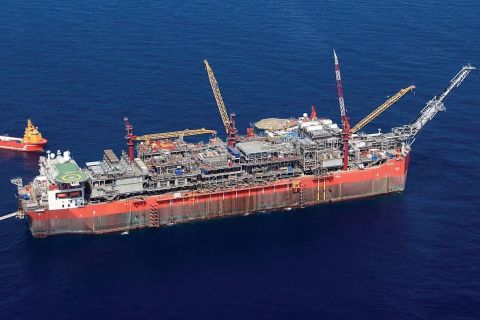[Editor's note: This story appears in the June 2020 edition of Oil and Gas Investor. Subscribe to the magazine here. It was originally published May 21, 2020.]
No doubt you were getting dizzy following oil, so you thought you needed to sit down. But wait—you have been sitting down for about eight weeks now. From a number below zero to $25/bbl or so, Brent finally got above $30—crude’s been on a wild ride. Disneyland may not be open, but the reality show unfolding in the oil patch provides more than enough thrills. However, note that in early May when Disneyland Shanghai reopened, the park sold out in a few minutes.
It’s one sign that cities around the world will get back to business, although the economic recovery will be uneven and take time. We have to bet on pent-up demand. The recovery appears to be V-shaped in most markets. We hope to see that in the energy world as well.
“This is an event-driven correction that we’re in right now. We expect there will be an economic recovery behind it … and with that, demand for the product we produce,” said Marathon Oil Corp. CEO Lee Tillman on the company’s first-quarter conference call.
No one can wait until 2023, however, for oil to reach $40 again, as the futures strip indicated at press time. Besides, that’s still a terrible price for most plays and a nonstarter for most E&P companies’ budgets.
To cope, Marathon suspended its dividend and share buybacks; voluntary curtailments are on the table.
“Our starting point is that our most economic barrels are flowing barrels … those are the ones you want to keep online,” Tillman said. “If we see barrels start to become a negative drag on our cash flow, then we would take a different set of options.”
IHS Markit said it expects global oil demand in the second quarter to be down 22% from a year ago—that’s 22 MMbbl/d of surplus that can’t be sold. The firm said, “It is pretty clear where production will be cut. Nearly everywhere.”
It expected about 14 MMbbl/d to be cut or shut in during the June quarter.
A Reuters survey found that North American producers alone will have cut up to 1.7 MMbbl/d by the end of this month.
Help is on the way in the form of naturally declining production in most fields. Companies are delaying or canceling final investment decisions for new projects around the globe, so they will not replace those lost barrels when demand creeps back up. The tug of war between supply and demand will thus continue unabated. No one knows when or if global demand will reach 100 MMbbl/d again.
Consumer confidence to drive and fly is unknown, and governments may be encouraged now to go greener even sooner.
Help is not coming from Austin nor is it needed. The Texas Railroad Commission opted to let the free market work, and even those who wanted to see prorationing have reduced production voluntarily.
Cuts have started to accumulate. ConocoPhillips Co. said it will have cut its North American volumes by 460,000 bbl/d by June. EOG Resources Inc. will cut more than E&P peers by 85,000 bbl/d this quarter, 45,000 bbl/d in the third quarter and 20,000 bbl/d in the fourth quarter, primarily in the Williston and Anadarko basins, which are areas most challenged by low oil prices.
“In the current commodity environment, shut-ins are the logical conclusion from a rate of return perspective,” said Raymond James’ analyst John Freeman in a research note.
Noble Energy said it will cut 30,000 bbl/d to 40,000 bbl/d in June. Earthstone Energy Inc. cut 70% of its operated production in May alone, one of the biggest cuts among its smallcap peers.
Texas crude output might fall by as much as 20% this year, according to Karr Ingham, economist for the Texas Alliance of Energy Producers. Hess has chartered three very large crude carriers to store its Bakken output for May, June and July, effectively removing 6 MMbbl from the market at least temporarily.
Most experts think the U.S. economic recovery will begin in the third and fourth quarters. Lone Star oil production (and that of North Dakota) may well be inching back up by year-end. After all, the Energy Information Administration said there are about 7,500 drilled but uncompleted wells sitting out there, a new form of storage that could be ready if the price is right.
The number of U.S. oil rigs at work was 807 a year ago in May; this year it was 325. Is this decline going to be enough to turn things around?
“Until the impact of reduced drilling and natural decline reduces productive capacity, there will remain barrels readily available to meet any increase in demand,” said Ralph E. Davis Associates president Steve Hendrickson, in the firm’s weekly update. “We should expect the supply overhang to keep prices depressed until it’s resolved.”
J.P. Morgan analysts predict demand won’t reach pre-COVID-19 levels until November 2021. We’ll see if oil prices follow.
Recommended Reading
TotalEnergies Starts Production at Akpo West Offshore Nigeria
2024-02-07 - Subsea tieback expected to add 14,000 bbl/d of condensate by mid-year, and up to 4 MMcm/d of gas by 2028.
Tech Trends: SLB's Autonomous Tech Used for Drilling Operations
2024-02-06 - SLB says autonomous drilling operations increased ROP at a deepwater field offshore Brazil by 60% over the course of a five-well program.
Seadrill Awarded $97.5 Million in Drillship Contracts
2024-01-30 - Seadrill will also resume management services for its West Auriga drillship earlier than anticipated.
Well Logging Could Get a Makeover
2024-02-27 - Aramco’s KASHF robot, expected to deploy in 2025, will be able to operate in both vertical and horizontal segments of wellbores.
Remotely Controlled Well Completion Carried Out at SNEPCo’s Bonga Field
2024-02-27 - Optime Subsea, which supplied the operation’s remotely operated controls system, says its technology reduces equipment from transportation lists and reduces operation time.





